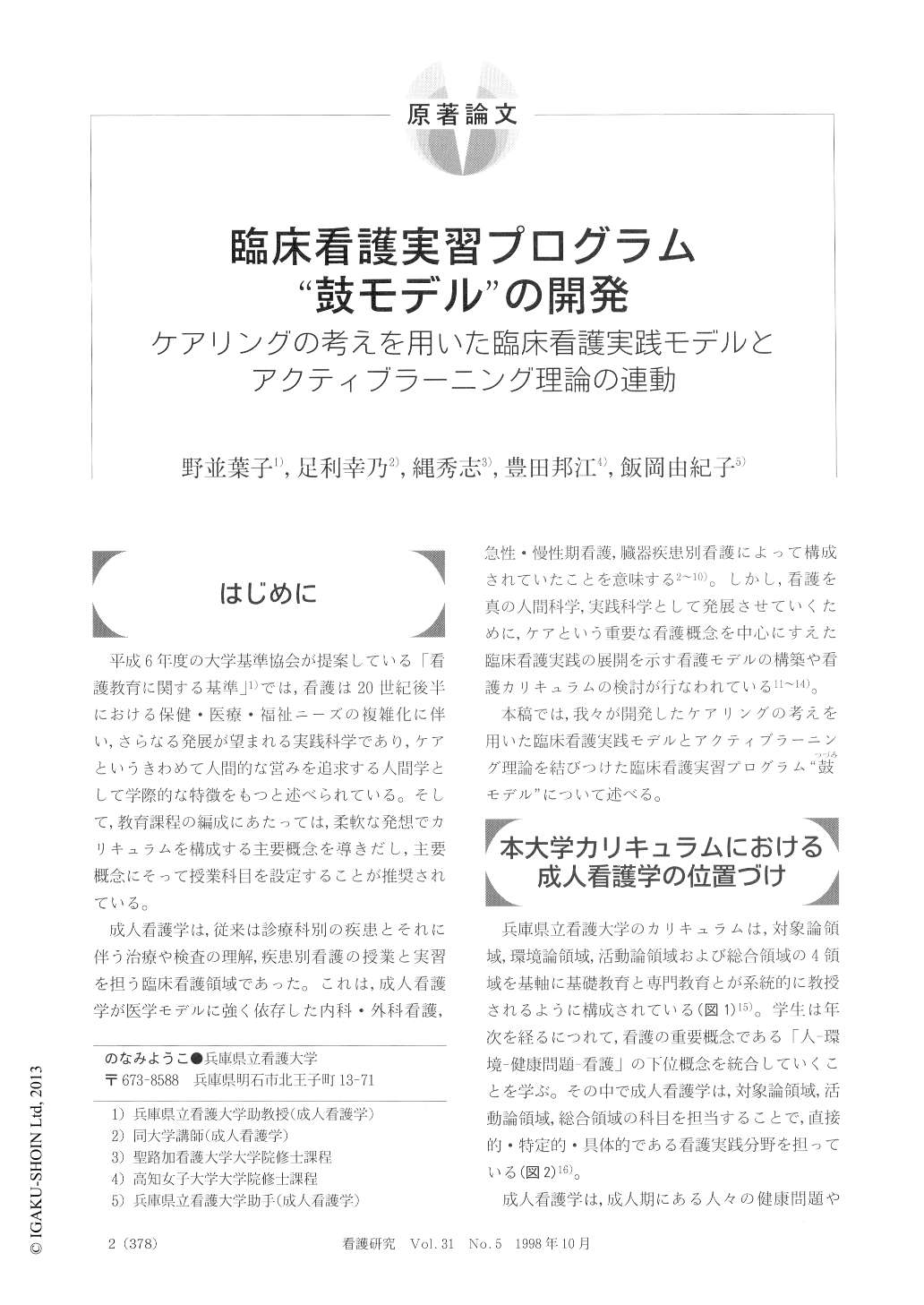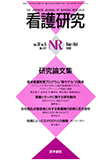Japanese
English
- 有料閲覧
- Abstract 文献概要
- 1ページ目 Look Inside
はじめに
平成6年度の大学基準協会が提案している「看護教育に関する基準」1)では,看護は20世紀後半における保健・医療・福祉ニーズの複雑化に伴い,さらなる発展が望まれる実践科学であり,ケアというきわめて人間的な営みを追求する人間学として学際的な特徴をもつと述べられている。そして,教育課程の編成にあたっては,柔軟な発想でカリキュラムを構成する主要概念を導きだし,主要概念にそって授業科目を設定することが推奨されている。
成人看護学は,従来は診療科別の疾患とそれに伴う治療や検査の理解,疾患別看護の授業と実習を担う臨床看護領域であった。これは,成人看護学が医学モデルに強く依存した内科・外科看護,急性・慢性期看護,臓器疾患別看護によって構成されていたことを意味する2〜10)。しかし,看護を真の人間科学,実践科学として発展させていくために,ケアという重要な看護概念を中心にすえた臨床看護実践の展開を示す看護モデルの構築や看護カリキュラムの検討が行なわれている11〜14)。
We developed the TUDUMI Model of Clinical Practice Program for our undergraduate students learning adult nursing. The TUDUMI Model combines Active Learning Theory with the Clinical Nursing Practice Model of Caring. We utilized the four elements of Active Learning Theory; talking and listening, reading, writing, and reflecting, and five elements were identified in the Clinical Nursing Practice Model of Caring; nurse stands in front of patient as individual being, is concerned about patient, makes statement about one's nursing care, shares one's experiences among nurse group, and gives and receives care between patient and oneself.
Three strategies were developed to combine these elements into the student nursing practice; Writing Narrative Record, racilitating Nurse's Group, and Sparing Time to develop Care. To assist students in implementing these three strategies we developed five guidelines for; 1)knowing one's inquiry and reflection, 2)writing narrative record, 3)group working, 4)understanding the body, and, 5)reporting the experiences of clinical practice. We are currently implementing and evaluating this model in our adult nursing course. This model has helped student to integrate their knowledge and learning into nursing practice, and us to guide clinical teaching as well.

Copyright © 1998, Igaku-Shoin Ltd. All rights reserved.


